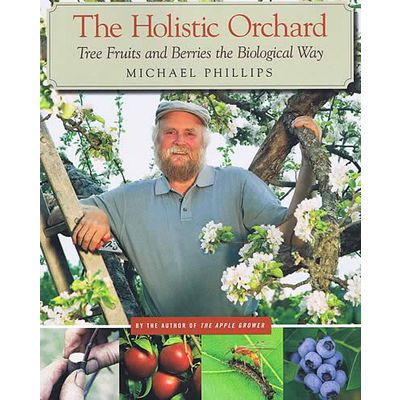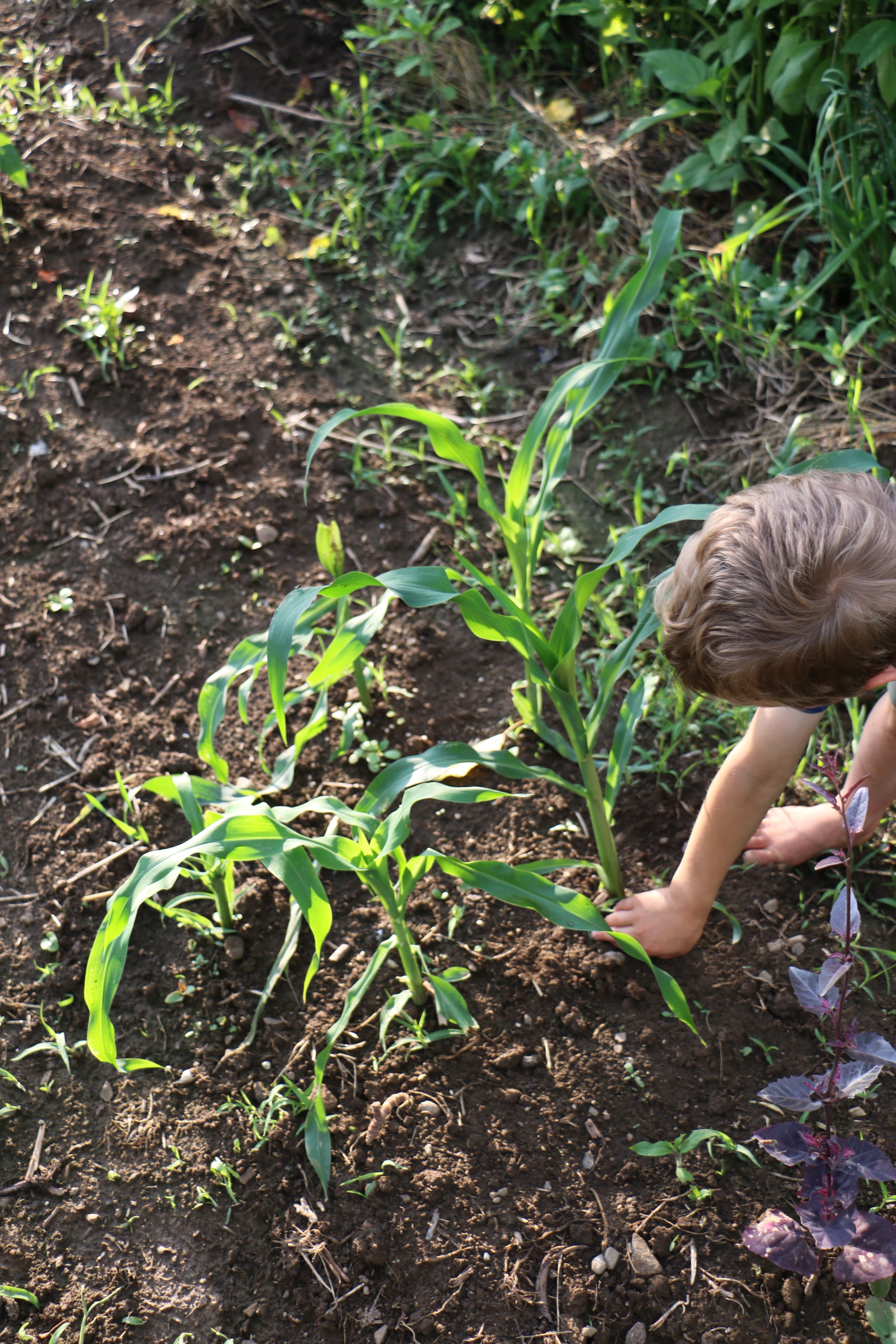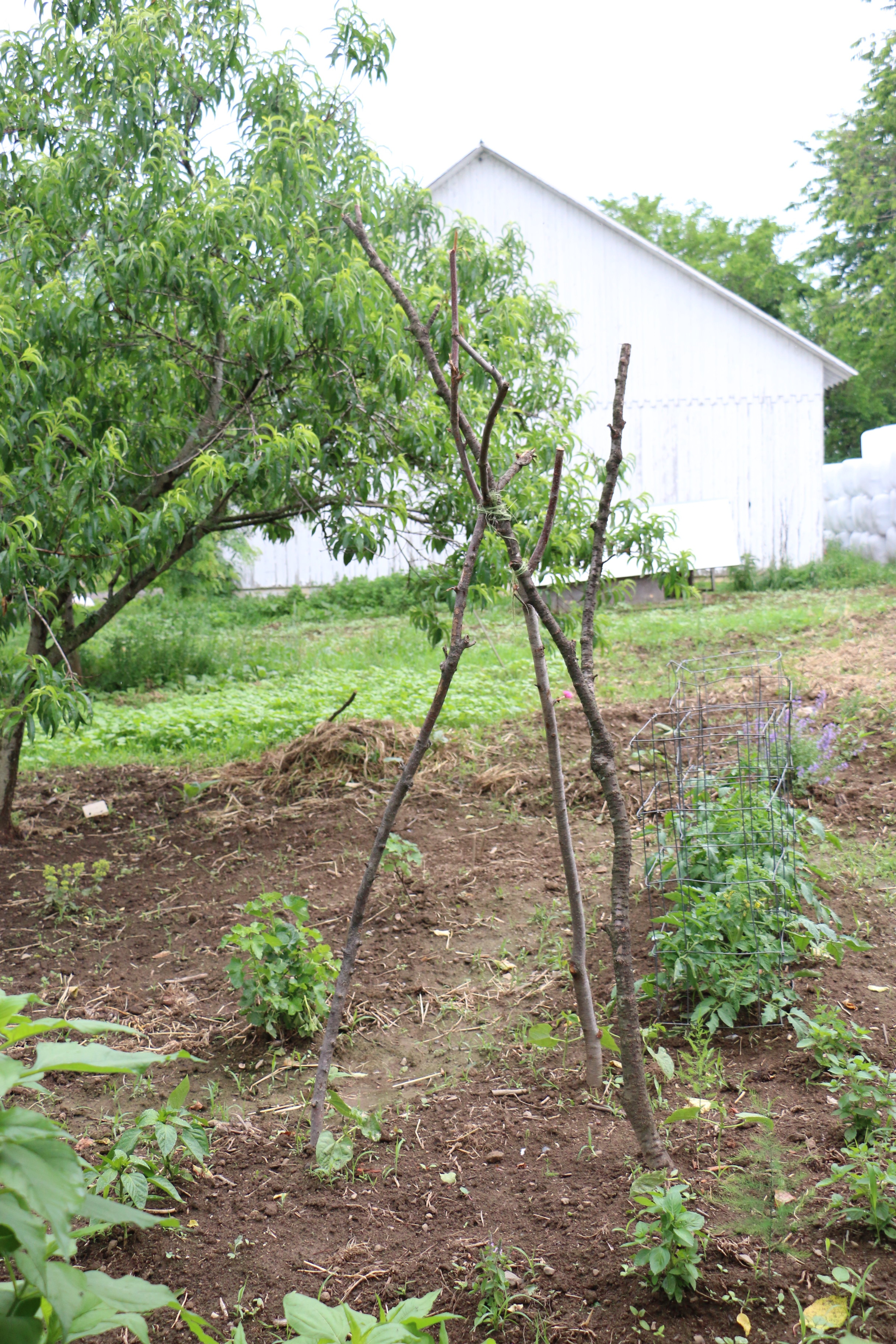
In addition to tending our family vegetable garden, I’m keeping my hoe in shape by tackling a new project, my forest garden.
In “permaculture” language, this is an area planted with mainly perennial plantings of differing heights including trees, bushes, herbs and flowers that are arranged so they all benefit each other. The idea is that the grouping provides a good assortment of food, mulch crops, insect pollinators, etc. with minimal outside inputs or on-going planting. I’ve had this project in my head for years and even had an area set aside and cover cropped with rye for two years. Finally, I’ve started in with the shovel to make it into reality.
The area I chose on the farm already had a snow peach tree, a young sweet yellow cherry and locust tree growing so that gave me a foundation to start with. I may add a few more small fruit trees in the future as I see how the space develops.
To keep this project low budget, I’m using many plant divisions from other areas of the farm and swapping with friends for other interesting cultivars.

My first planting was a circle of currant bushes and a josta berry around the drip line of the peach tree. One of the long beds was planted with 25 Earliglow strawberry plants (my only cash purchase so far!), 6 rhubarb plants from an Amish friend and room to add asparagus crowns in the fall.
My medicinal herb bed so far has elecampane, hyssop, arnica, blessed thistle, St. Johns wort and spilanthes and a separate area with a dozen echinacea plants. Along the shaded area of the shed, I have a bed of various mints where they are allowed to ramble as they wish. A couple comfrey plants under the peach tree are meant as a crop I can cut mulch from several times each season.
One of the raised beds is my “butterfly mound” and I transplanted milkweed, butterfly weed, catmint, a butterfly bush and some baptisima seedlings. I scored the baptisima when I helped weed the butterfly garden at our local historical village and the gal told me I was welcome to take home any “weeds” I wanted! It is a legume with gorgeous purple pea type blossoms and also a nitrogen fixer which is an important element in permaculture systems.

Another bed will be for garden annuals that I plan to save seed from and need isolated from my garden to avoid cross pollination. I have three Cherokee Purple tomatoes, Fortex pole beans growing on a branch teepee trellis, Orange Bell peppers and a circle of Bloody Butcher corn.
Our farm has a number of old-fashioned roses scattered about and I carefully dug and divided several of them to add to the forest garden, simply for the pleasure of smelling the roses. I also planted several perennial flowers for attracting pollinators and making bouquets. Another corner is nearly ready for two rows of berries. I plan to use landscape fabric as the base to keep weeds under control. The blackberries and raspberries have been patiently waiting in pots from when I divided them in spring.
For the next step, I’m carefully watching for any signs of quack grass, a pernicious perennial weed that I want completely eradicated before I mulch the whole area heavily with old hay and straw.

There are still a couple of empty corners left. Since I’m not sure what I want to plant, they’re sowed with buckwheat as a summer cover crop. I’m sure it will be an on-going work-in-progress and there will likely need to be rearranging and adjustments made.
On my wish list for future additions are spouting on the nearby shed that drains into a rain barrel, bird-attracting plants like serviceberry and chokecherry, and a garden bench so I can sit and relax after a hard day of weeding and enjoy the beauty of my forest garden.
Stop by on Thursdays from 10-2 in the garden room at Lehman’s in Kidron to tell me about your garden projects. I’d love to compare notes.



























